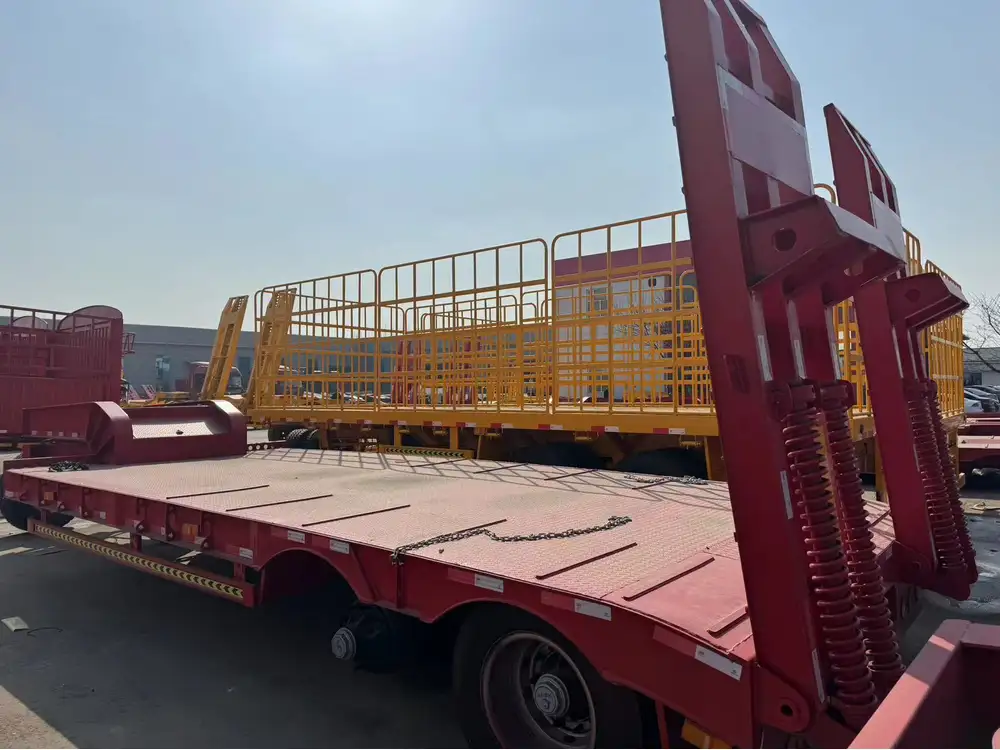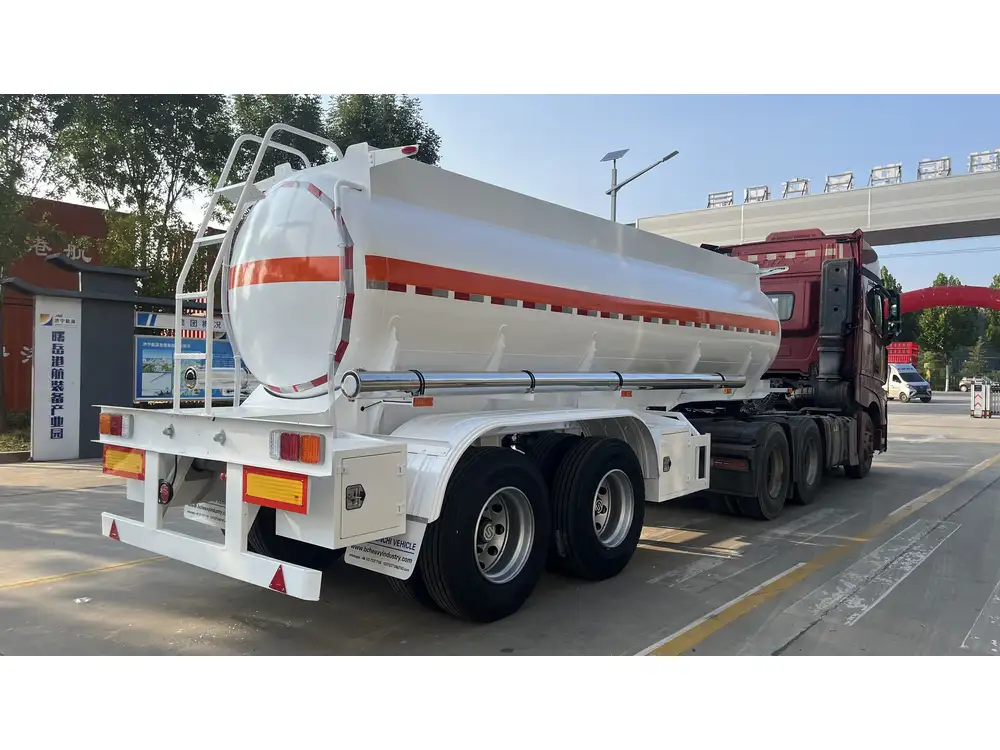When it comes to the transportation industry, understanding the dimensions of semi trucks and trailers is crucial for logistics, compliance, and efficient planning. Not only do these dimensions dictate how loads are handled, but they also influence regulatory compliance and safety on roadways. In this detailed guide, we will explore how long semi trucks and trailers typically are, delve into the factors that affect their sizing, and provide essential insights for manufacturers, fleet operators, and other stakeholders in the industry.
Semi Truck and Trailer Dimensions Overview
The average length of a semi truck and its associated trailer can vary widely depending on several factors. Here’s a breakdown:
| Component | Typical Length (in feet) | Typical Length (in meters) |
|---|---|---|
| Semi Truck (Cab) | 15-25 | 4.5-7.6 |
| Standard Trailer | 48-53 | 14.6-16.2 |
| Total Length (Combined) | 65-75 | 19.8-22.9 |
This table illustrates the average lengths, noting that variations can occur based on specific trailer types, the truck model itself, and any additional configurations.
Semi Truck Dimensions: Key Factors to Consider

1. The Truck Cab
The semi truck cab typically ranges from 15 to 25 feet in length, depending on the manufacturer and model. Key factors influencing the size include:
- Engine Type: Larger engines in heavier duty trucks may contribute to a larger overall size.
- Cab Configuration: Options such as day cabs or sleeper cabs significantly impact the cab’s size, with sleeper cabs extending the length.
2. Trailer Length
The standard length for a tractor-trailer is commonly 48 to 53 feet. However, different types of trailers exist, each with its own specifications:
- Flatbed Trailers: Commonly used for transporting heavy machinery and construction materials, ranging from 48 to 53 feet.
- Refrigerated Trailers: Typically maintain the standard 53-foot length but might have different height and width dimensions.
- Lowboy Trailers: Designed for transporting heavy loads; their length can vary significantly based on the load requirements.
Regulatory Considerations
Different states and countries have varying regulations when it comes to allowable lengths for both trucks and trailers. In the U.S., for instance, the federal limit for overall length is typically 75 feet but can depend on the state.

3. Weight Distribution and Load Types
Understanding the length of a semi truck and trailer is essential, but equally vital is the weight distribution of the load being carried. Individual states may impose different regulations based on:
- Gross Vehicle Weight Rating (GVWR): The total weight limit specified by the manufacturer.
- Payload Capacity: The actual weight of goods carried, which can affect the choice and length of the trailer.
4. Couple and Turn Radius
The length of semi trucks and trailers also influences turning radius. A longer vehicle requires more space to maneuver, which can affect urban deliveries, parking, and navigability on tight roads.
Total Length vs. Usable Length
While the overall dimensions provide a snapshot, understanding usable length is equally important. The usable length refers to the space available for loading cargo once the trailer is attached to the tractor.

Usable Length Calculation
To calculate the usable length:
Usable Length = Total Length - Length of Fifth WheelExample Calculation
Assuming a 53-foot trailer connected to a cab that measures 20 feet, if the fifth wheel occupies 3 feet, the usable length would be:
53 ft (Trailer) + 20 ft (Cab) - 3 ft (Fifth Wheel) = 70 ft Usable LengthVariability Across Trailer Types
As previously mentioned, various trailers have different lengths and capacities, which is crucial knowledge for logistics and routing. Below is a comparison table of standard trailer types:
| Trailer Type | Standard Length | Weight Limit | Typical Use |
|---|---|---|---|
| Standard Flatbed | 48-53 ft | 48,000 lbs | Construction materials |
| Reefers | 53 ft | 45,000 lbs | Perishable goods |
| Dry Van | 48-53 ft | 45,000 lbs | General freight |
| Lowboy | 28-30 ft | 40,000-50,000 lbs | Heavy equipment |
| Step Deck | 48-53 ft | 45,000 lbs | Heavy and oversized loads |

Comparison of Trailer Types: Pros and Cons
When choosing the appropriate trailer length or type, understanding the pros and cons of each is crucial for operational efficiency:
| Trailer Type | Pros | Cons |
|---|---|---|
| Standard Flatbed | Flexible loading/unloading; easy access | Cargo must be secured; exposed to elements |
| Reefers | Temperature-controlled transport | Higher maintenance and fuel costs |
| Dry Van | Enclosed transport; versatile uses | Limited height with certain loads |
| Lowboy | Ideal for heavy and oversize loads | Limited cargo types allowed |
| Step Deck | Ability to carry tall loads; versatile | Typically more expensive |
Conclusion on Trailer Choices
Selecting the appropriate trailer not only impacts transport efficiency but also overall costs. The combination of trailer type, length, and cargo consideration plays a pivotal role in successfully meeting logistical needs.
Industry Standards and Regulations
Understanding the length requirements is necessary, but it’s equally important to be aware of the regulatory standards impacting semi truck and trailer operations. Compliance with these regulations ensures safer and more efficient transport operations.

International Standards
Globally, international bodies like the World Forum for Harmonization of Vehicle Regulations (WP.29) provide guidelines on maximum vehicle dimensions. Various international treaties and agreements, such as the UN/ECE regulations, aim to ensure that vehicles meet specific criteria regarding length, width, height, and weight.
National Standards
In the United States, each state sets its own rules regarding semi truck lengths and configurations. The Federal Highway Administration (FHWA) establishes maximum dimensions for large trucks, but states retain the authority to impose stricter rules. It is essential for companies operating across state lines to be aware of varying regulations.
Special Permits
For vehicles that exceed standard lengths or weights, obtaining special permits is often necessary. These permits allow carriers to legally transport oversized loads, generally involving additional fees and specific routing requirements.

Impact of Non-Compliance
Non-compliance with vehicle size regulations can have severe repercussions. Excessive fines, vehicle impoundment, and safety hazards due to improper load handling underscore the importance of adhering to established standards.
Conclusion
Grasping the intricacies of semi truck and trailer dimensions is essential for anyone involved in the logistics and transportation industries. From understanding how long semi trucks and trailers are, to considering the implications of weight, loading capacity, and regulations—every detail contributes to effective and compliant transport. By strategically choosing the right type of trailer and adhering to industry standards, operators can enhance their operational efficiency and safety on the road.
As the transportation landscape continues to evolve, staying informed on dimensions, regulations, and innovations in semi truck and trailer designs will ensure that stakeholders can adapt and thrive in a competitive marketplace.



